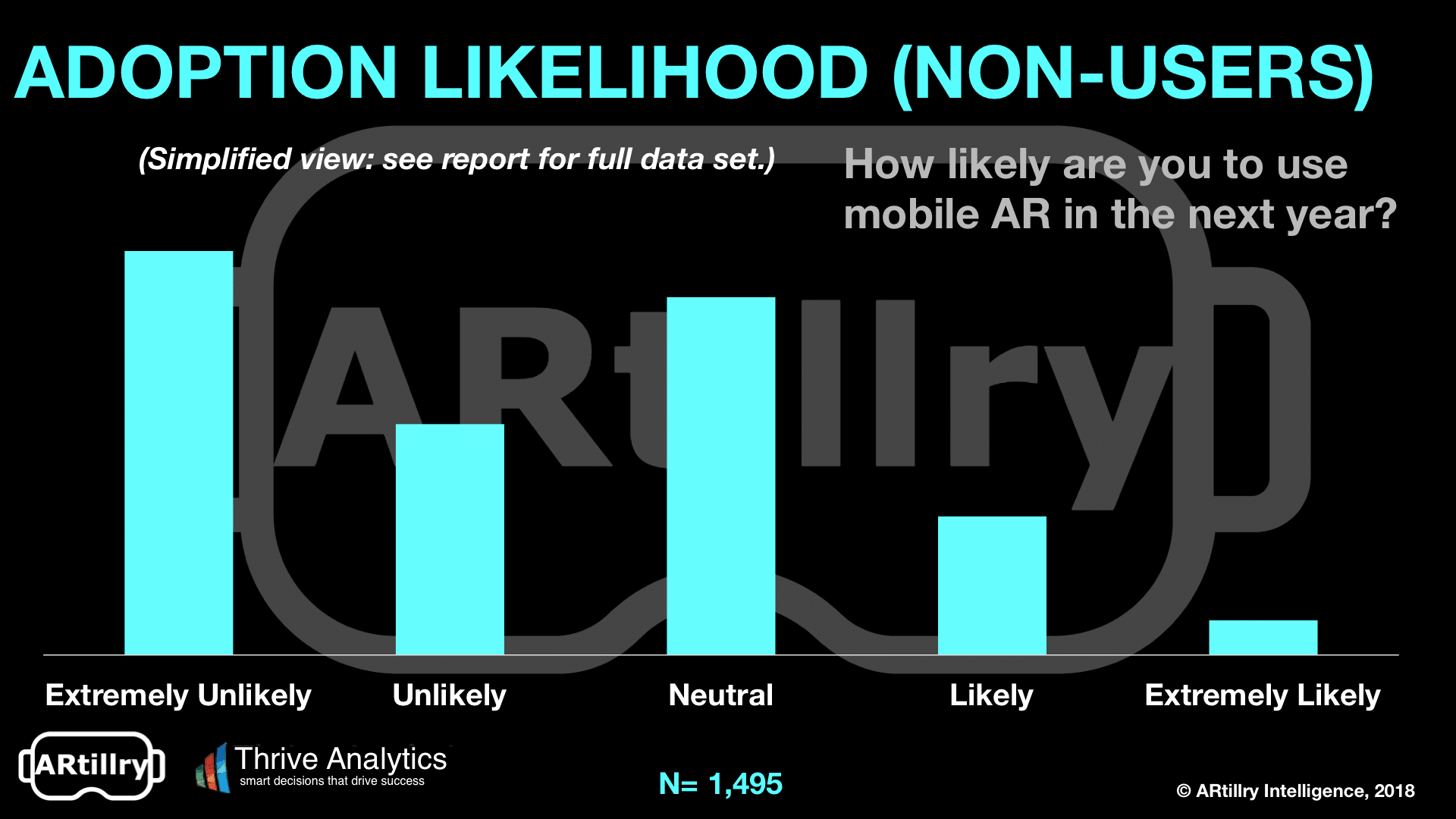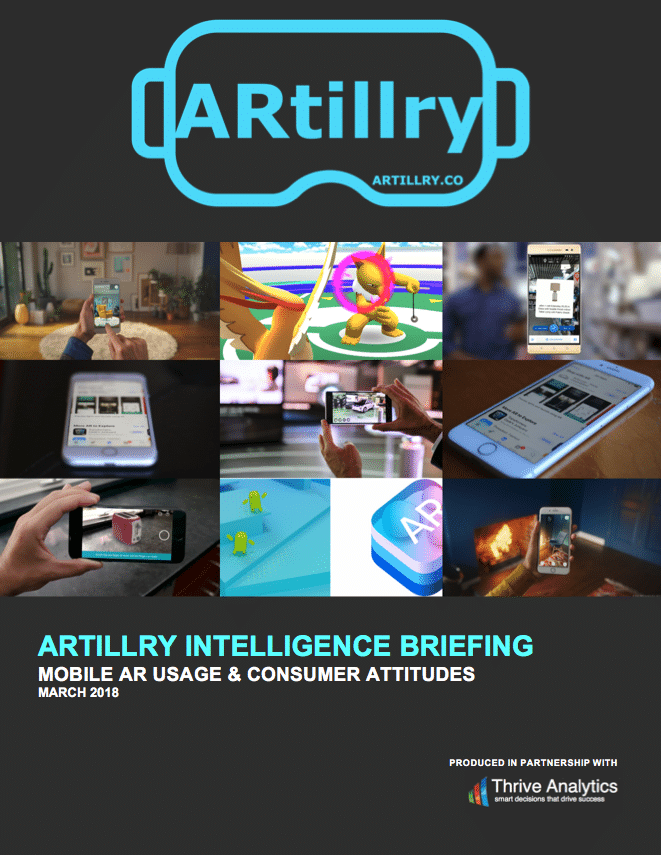
This post is adapted from ARtillry’s latest Intelligence Briefing, Mobile AR Usage & Consumer Attitudes. It includes some of its data and takeaways, including original survey research. More can be previewed here and subscribe for the full report.
Another positive sign for mobile AR is the satisfaction levels that current users report. A strong majority of respondents report report being satisfied or very satisfied. A decent amount remain neutral and a small minority report low or very-low satisfaction. These are strong quality signals.
In fact, there are few consumer products that show such high satisfaction levels. As a point of comparison, the VR findings examined in ARtillry’s August Intelligence Briefing were likewise high. But they were still slightly lower than these reported AR sentiments.

This tells us a few things. For one, AR’s highly visual and immersive format is already captivating users. This is largely due to its revolutionary – rather than evolutionary – interface when compared with non-immersive mobile app experiences that have become routine.
It also counters some observations we made in last month’s Intelligence Briefing that early mobile AR development will output sub-par experiences. We stand by the assertion that apps will evolve a great deal, just as early iOS apps did, but high satisfaction is happening already.
Not So Fast…
But mobile AR sentiments aren’t all good news. When looking at non-users, we see the opposite. A majority of non-mobile AR users report that their reason for disinterest is the rather definitive “just not interested.” This represents a daunting barrier for mobile AR proponents.
Meanwhile there’s a fair amount of confusion with mobile AR, including “I wouldn’t know where to look,” and “I’m not sure if my phone is compatible.” Meanwhile, there are a decent amount of consumers that are intrigued… but not enough to seek out and download apps.

Going beyond reasons for disinterest, we also asked about the likelihood of being swayed by mobile AR in the next 12 months. There, the answers were similarly daunting, with the majority of respondents reporting that they are unlikely or extremely unlikely to adopt.
Overall, these findings are telling. The answers each tell their own stories while they collectively demonstrate a common theme. Starting with the commonalities, all responses signal a need for better consumer education. This is especially true for the technologically-confused sentiments.
This challenge will recede as consumers develop more acclimation and comfort levels with AR. But for now, this should tell the industry that AR remains in “techy” territory in terms of confusion and other factors that scare people away… or at least exacerbate an ambivalent attitude.

A Marketing Challenge
As for the “just not interested” crowd, that’s the most damning of these non-user responses. Not only is it supportive of more consumer education, like the above points, but it highlights a key challenge for immersive tech. Because it’s so visual and visceral, you have to see it to believe it.
In other words, the variance in satisfaction for users and non-users underscores AR’s marketing challenge. People love it after they get a taste… but you have to get them to taste it before achieving that satisfaction. And with AR, it’s difficult to do this through ad copy or video.
This will slowly alleviate over time as mobile AR assimilates into the consumer population through viral and other means. Meanwhile, AR adoption can be accelerated through stickiness and social features that carry the experience to more users via network effect.
For deeper XR data and intelligence, join ARtillry PRO and subscribe to the free ARtillry Weekly newsletter.
Disclosure: ARtillry has no financial stake in the companies mentioned in this post, nor received payment for its production. Disclosure and ethics policy can be seen here.

